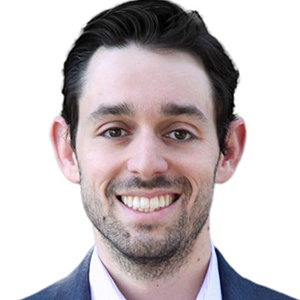Today we live in a world where, rather than working for a company, people can make a living freelancing on Upwork, renting their homes on Airbnb, creating products to sell on Etsy, or driving for companies like Uber. Meanwhile, platforms like LinkedIn make it easier for recruiters and competitors to steal a company’s best employees. Indeed, the war for talent has never been more fierce. So companies are making strong investments in the employee experience—the physical, digital, and cultural environments. The goal is to make employees more engaged and productive, and happier.
Jacob Morgan is the author of the Future of Work: Attract New Talent, Build Better Leaders, and Create a Competitive Organization, speaker, and the co-founder of the FOW Community, a council on the future of work at which companies, including the three in this column, pay to be members.

I see many cases of this as I visit offices around the world, speaking to executives and employees in my work as an author and speaker on building better organizations. Cisco, for example, believes that work isn’t an office you go to, it’s something that should accompany you regardless of where you are. The company is implementing “smart offices”—no assigned spaces, but when you sit at a desk or enter an office, it becomes yours, thanks to technology. Your personal preferences, like the lighting and temperature, are immediately accommodated. Your contacts are downloaded to the computer in the room. Cisco is also experimenting with allowing employees to have more than one job. Freelancers work on multiple projects for multiple companies—why not take this approach in the corporate world? At Cisco you can help choose and customize how you want to work instead of having someone tell you.
Few organizations I’ve encountered understand how the workplace is changing like Whirlpool. The company recently launched an initiative called the Winning Workplace that focuses on tools, environment, and culture. Regarding tools: The company recently moved from IBM Notes to the Google Apps technology suite, signifying a trend in which business applications are modeled after the consumer ones we use in our everyday lives—everyone knows how to use Google. As for physical environment, Whirlpool has created more open spaces to encourage innovation and collaboration. And for culture: To help create a flatter structure and encourage leadership, Whirlpool dropped traditional job titles and grouped all employees into one of four categories: leading self, leading others, leading function, and leading enterprise. The company wants to view every employee, regardless of how senior or junior, as someone who can lead. Very few companies have embarked on a journey as comprehensive as this three-pronged approach.
LinkedIn is adapting to the new world of work by focusing on the employee experience through its human resources department. LinkedIn leverages data from several sources (compensation, LinkedIn profile, performance reviews), for example, to generate a type of heat map that lets managers know when it’s a good time to have a career conversation with an employee. Managers are encouraged and trained to have such conversations. Data is also used to analyze the effectiveness of managers. LinkedIn knows, for example, that employees filling out a review of a manager typically write more if they are unhappy. So the company can quickly identify ineffective managers.
We can expect far more changes; indeed, we are in the middle of a fascinating evolution that will re-define what it means to be an employee and a manager, and what it means to work.

For the Future of Work, a special project from the Center for Advanced Study in the Behavioral Sciences at Stanford University, business and labor leaders, social scientists, technology visionaries, activists, and journalists weigh in on the most consequential changes in the workplace, and what anxieties and possibilities they might produce.



